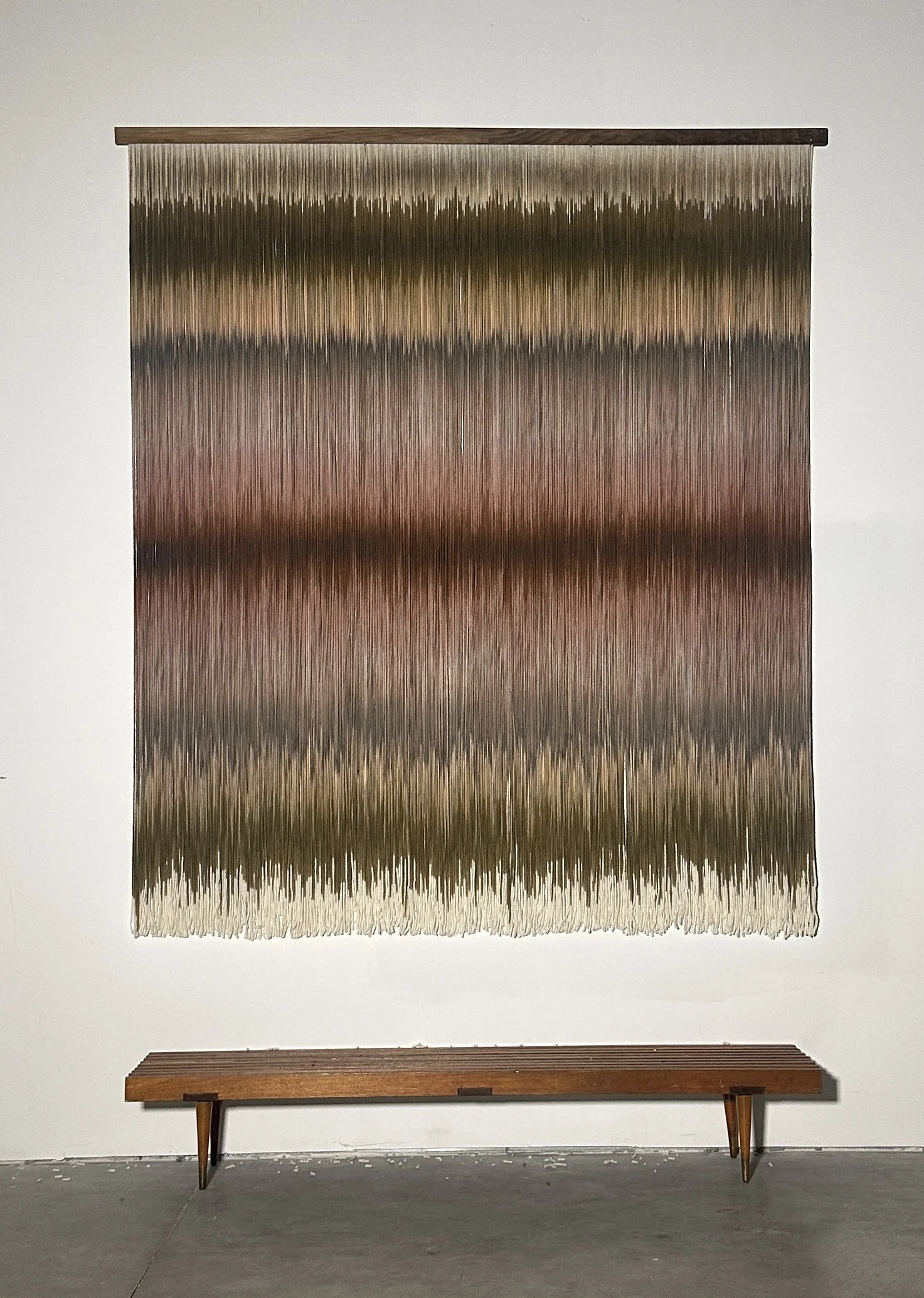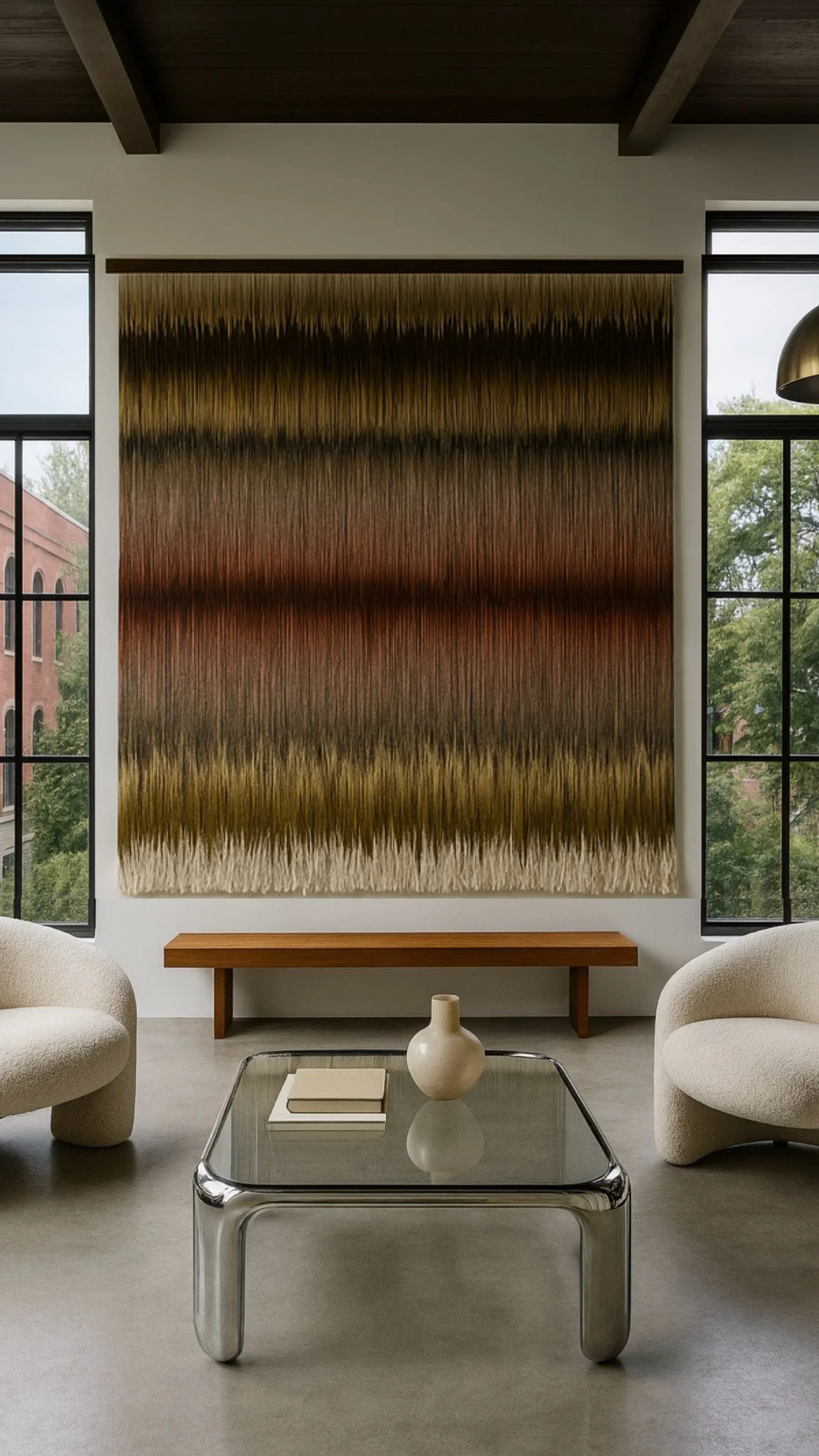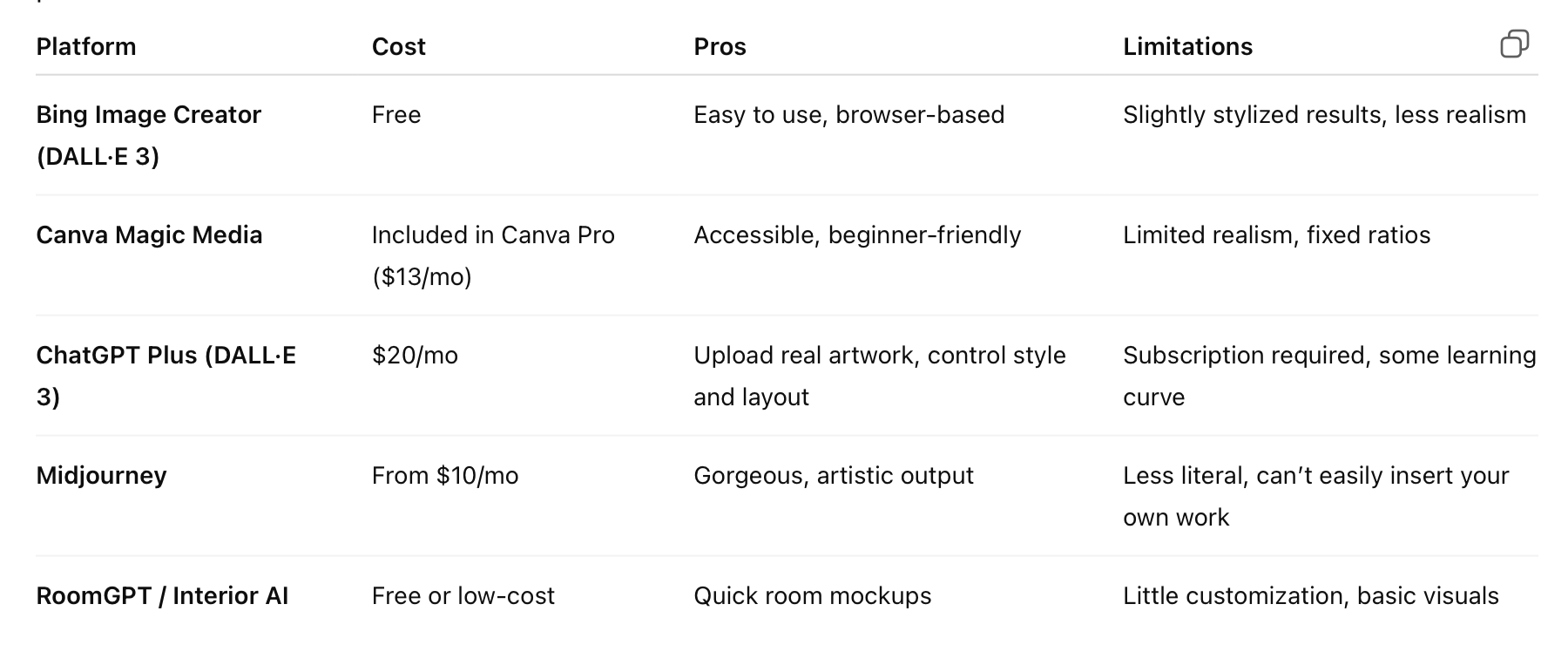How I Use AI to Visualize My Artwork in Space: A Creative Guide for Artists and Designers
For years, I’ve worked to understand how my fiber art interacts with light, architecture, and emotion. But lately, I’ve been experimenting with a new kind of visualization — one that allows me to see my artwork in imagined spaces before it ever leaves the studio.
Using AI image generation, I’ve started creating interior environments around my artwork. I upload a photo of one of my pieces, pair it with an inspiration image (a room, a color palette, a lighting reference), and generate a complete space with windows, textures, furniture, reflections, and all.
It’s become part of my creative process, helping me explore scale, placement, and mood. And I love that for collectors it offers a glimpse of how art can completely transform a space.
What Is AI Visualization?
AI visualization is simply a digital design tool that uses reference photos and written prompts to generate realistic images. For artists and designers, it can be a powerful way to explore how your work might live in an interior, gallery, or architectural environment without needing a full-scale installation.
Think of it like a digital sketchbook for space and light.
“Bohemian Rhapsody” 2025 using Lauren’s signature Canvas with Movement wool, walnut, dye and paint
Image Generation featuring “Bohemian Rhapsody” by artist Lauren Williams
My Process Step-by-Step
Here’s how I use it to bring my artwork into imagined interiors:
Choose an inspiration image.
I start with a photograph that captures the kind of space or energy I want. For me, I love tall windows, natural light, chrome details, wood tones, plaster walls and stone textures, etc. Often I will upload many images of isolated items that I want included in the space.Upload my artwork.
A clear, well-lit image of the art I want to visualize. Include the dimension of the artwork as-is, or how you want it represented in your image. The AI uses this to place it within the new environment.Write a detailed prompt.
I describe the type of room, materials, and atmosphere I want- for example:
“Design a modern room around this artwork with tall windows, natural light, add a chrome coffee table and use these additional images as inspiration for the space.”Refine the result.
I might scale the piece, adjust lighting, or try new angles until the image feels balanced and authentic to my aesthetic. I often reply to the image generated and re-edit by entering in this prompt: “Replace the light fixture with this one (upload specific light) and scale the artwork to be 84” wide and 72” tall”
Tools You Can Try
See below for a few different tools that can create this kind of visualization — ranging from free to professional-level:
Free vs. Paid Options
If you’re just exploring, start with Bing Image Creator, it’s free and surprisingly capable.
If you want to upload your own artwork and get polished, realistic renderings (like the ones I share on Instagram), ChatGPT Plus with DALL·E 3 gives you the most creative control.
Lauren’s Tip: The better your references, the better your results. Combine your artwork with interior inspiration images that reflect your desired style. I have found that including lighting, specific materials, and tone descriptors make all the difference.
Why This Matters for Artists and Collectors
For me, AI visualization isn’t about replacing the tactile beauty of handmade art, it’s about expanding the conversation around it.
It helps me:
Experiment with new ways to present my pieces
Communicate vision to collectors and designers
Explore architecture and scale before installation
Visualize directional lighting in relation to where my artwork will hang
And for collectors, it bridges the gap between imagination and reality by letting them see how art can elevate a room long before it’s hung on the wall.
These renderings aren’t replacements for real photography, but instead they’re visual studies that expand imagination, storytelling, and connection.
See It Come to Life
If you’d like to see how these digital visualizations translate into real installations, visit my Available Works page.
Each piece is photographed and described with the same attention to movement, light, and structure that these renderings help me explore. Screen shot your favorite art piece and upload it to Chat GPT with any of my go-to prompts below and let the visualizations motivate you to choose the best piece of artwork for your space!
My go-to Prompt Structure
“Create a room rendering that includes a large window for natural light, tall plaster walls, warm wooden floors and a brass art light to illuminate the artwork on the wall. Use the included images as inspiration for materials, textures, and artwork. The artwork dimensions are:”
include specific measurements provided in my artwork descriptions; images for inspiration can be found in magazines, online or even your own photos of spaces you love.
“Add the artwork in this image to my living room wall. The artwork measures 72” wide and 48” tall. The wall behind my sofa measures 10 feet wide and 12 feet tall. The artwork should be 12” above the back of the sofa.”
upload an isolated image of the artwork with a photo of your living room using as much natural light as you can for the photo
How to Adjust Scale & Refine Image
“Regenerate this image to correct lighting, transitions, and shadows. I used a few different images and cropped them together to adjust scale. Smooth the blend and make the artwork look naturally integrated.”
I have found that Chat GPT struggles with scale or even specifying quantity of items. Sometimes I will crop images together to upload and explain visually what I am looking to see in the next image generation.
Whether you’re visualizing my art in your space, your own artwork or simply curious about how technology and fine art intersect for interior design, this is a beautiful way to reimagine the creative process.
And if you’d like to see how these renderings translate into real installations, explore my “Designer Spotlight” posts in the Journal. I have worked with hundreds of designers around the world and I believe that designers make the magic happen, each transforming spaces when my artwork meets their thoughtful designs for the most valuable, real life experiences.
What are you thoughts on using AI to generate images for artwork and interior renderings? I would love to know what you think in the comment section below. Have you used Chat GPT before like this? How did your opinion change or improve once you were able see real life renderings? I believe decisions for home renovations will be much easier to make the next time I embark on a renovation. I will definitely be using this method to make it easier for me to visualize all the things!



